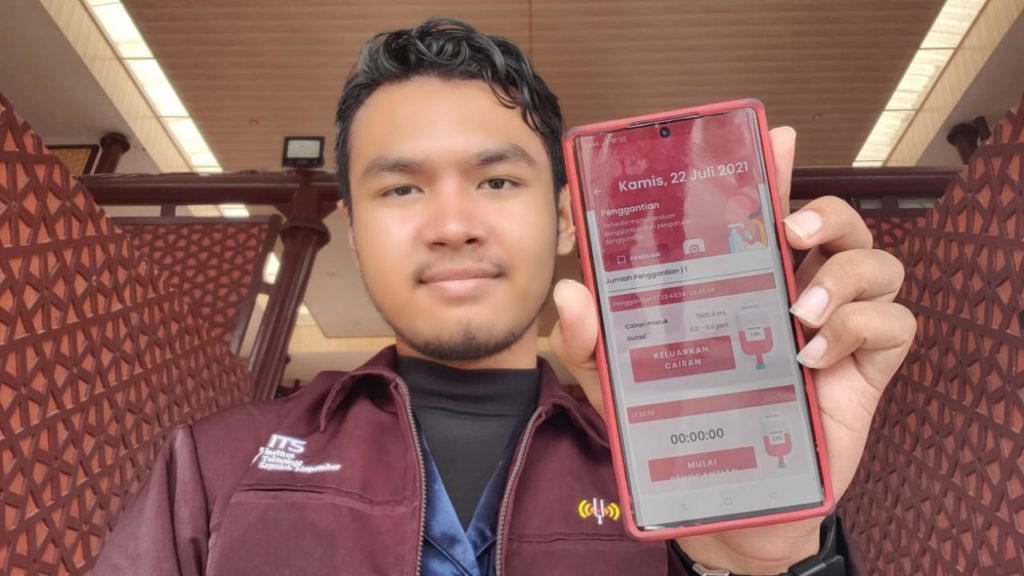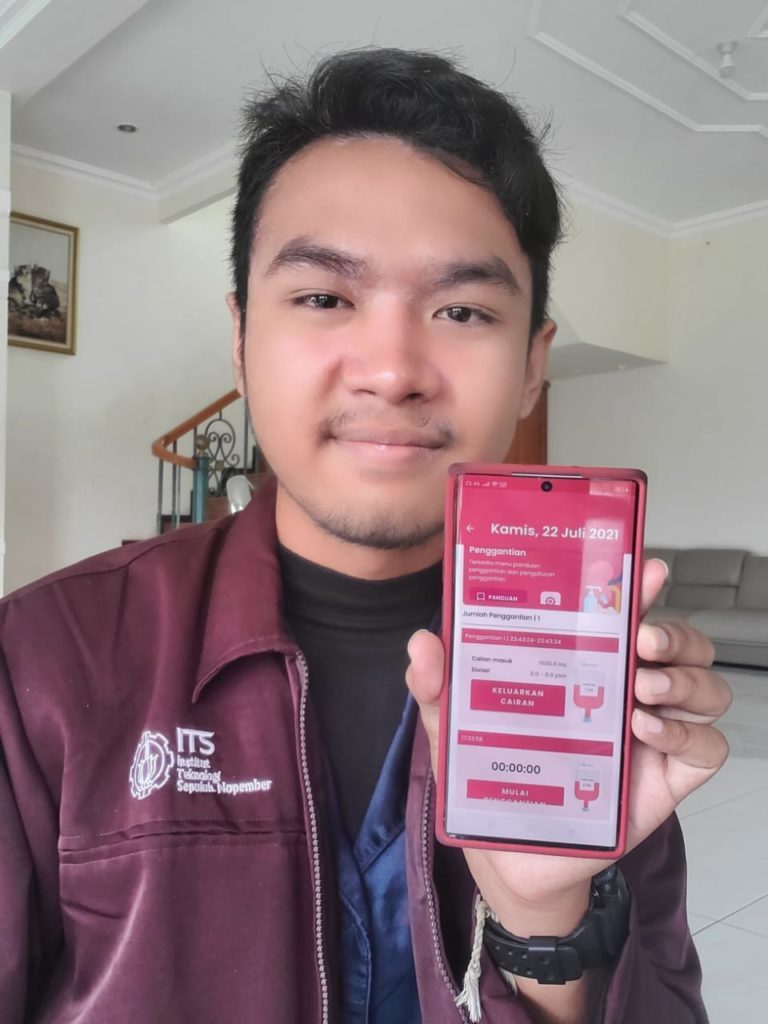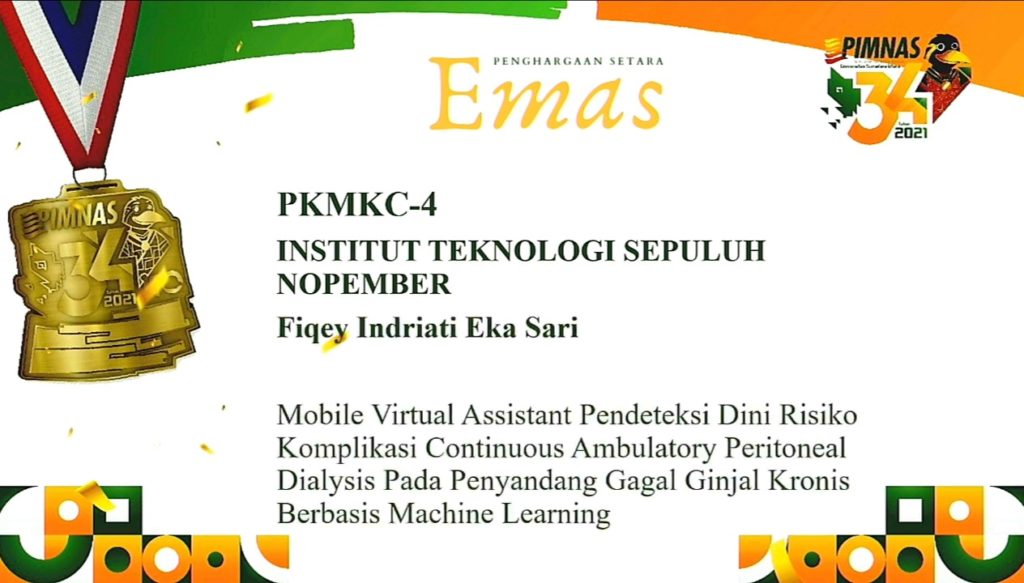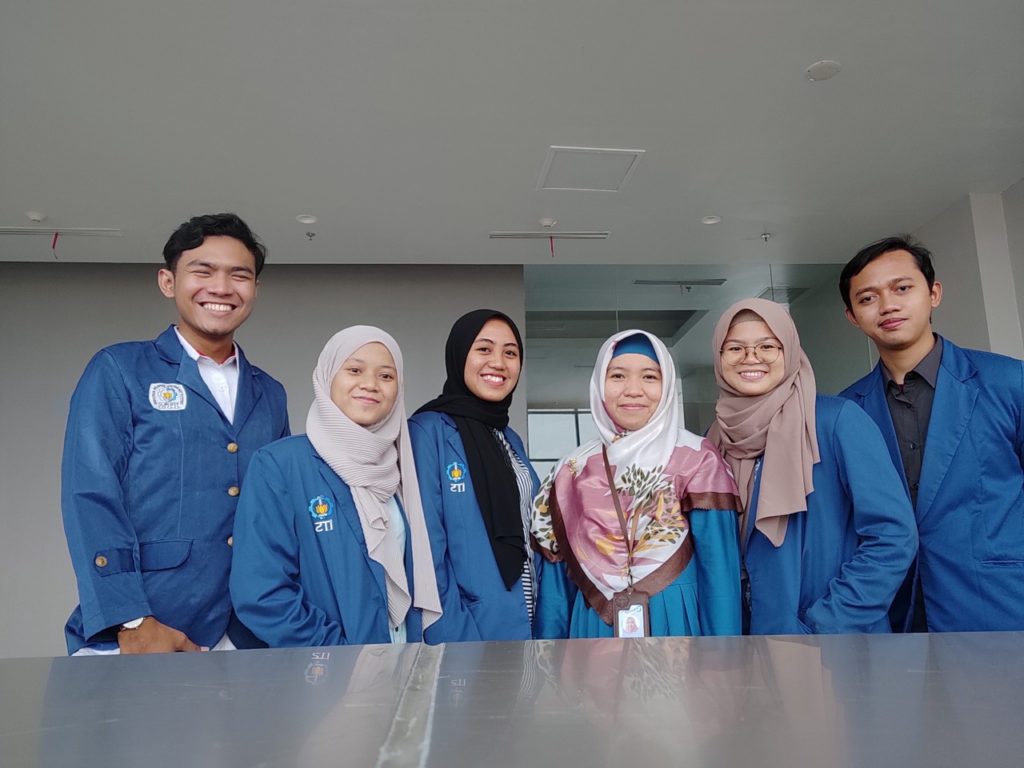ITS Students Create Applications for Kidney Failure Patients

The display of the SahabatCAPD application by the ITS student team to help patients with Chronic Kidney Failure (CKD)
ITS Campus, ITS News – Patients with Chronic Kidney Failure (CKD) who use the Continuous Ambulatory Peritoneal Dialysis (CAPD) method often encounter self-monitoring problems that result in complications. To overcome this, students of Institut Teknologi Sepuluh Nopember (ITS) created SahabatCAPD, an application with machine learning technology, in order to help CKD patients detect early risk of complications and improve patient self-monitoring.
Fiqey Indriati Eka Sari, the team leader, explained that the Indonesian government had established a solution for evenly distributed end-stage CKD treatment. The solution is Peritoneal Dialysis therapy, especially the CAPD method. “The CAPD method is an alternative because patients can have a 90 percent better quality of life than other therapeutic methods,” he explained.
Furthermore, Fiqey explained that the working principle of CAPD is to deliver sterile dialysate fluid to the peritoneal cavity through a permanent catheter as a substitute for kidney function. Patients do this routine three to five times a day. “Therefore, patients are required to have high discipline and self-monitoring,” he said.
However, in practice, continued Fiqey, research in 2016 and 2020 showed the patient neglect rate reached 74 percent. In addition, the patient admitted that it was difficult to recognize the symptoms of complications that resulted in delays in treatment. “In the current condition, patients also do not follow up fluid replacement data, so medical personnel finds it difficult to diagnose complications early,” said the student, who is also a member of the ITS Ichiro Robotic team.
After reviewing dozens of journals on Peritoneal Dialysis, Fiqey and his team found that color changes of CAPD patients’ discharge can be used as an early indicator for diagnosing complications. It is also indicated based on the patient’s waste fluid level of turbidity.
“Therefore, we carry the research titled Mobile Virtual Assistant Early Detection of Complication Risk of Continuous Ambulatory Peritoneal Dialysis in Machine Learning-Based Chronic Kidney Failure Patients, which we also call SahabatCAPD,” said this Informatics Engineering Department student.
The SahabatCAPD application has three main functionality concepts. First, a logbook as a substitute for a dialysis logbook for patients is more effective and systematic in providing follow-up data to medical personnel. Second, chatbot as a virtual assistant system when patients need education about CAPD. Third, a machine learning-based complication early detection model.

The display of the SahabatCAPD application by the ITS student team to help patients with Chronic Kidney Failure (CKD)
The SahabatCAPD application allows patients to connect with medical personnel to make follow-up fluid replacement data easier to monitor. The intention is to make it easier for medical personnel to prevent complications as early as possible. “At first, the patient had to bring a notebook to the hospital, now monitoring can be reviewed directly from afar,” said the student from Pasuruan City.
Regarding the accuracy of the suitability of image processing solutions to indications and complications, the model has an accuracy of 94.7 percent. In addition, SahabatCAPD has also been tested on five CKD patients according to the System Usability Scale (SUS) standard and got a score of 80. “During the seven days of using the application, patients routinely update fluid replacement data smoothly,” he said.
According to Fiqey, his team also tested the application based on one of the existing medical standards, namely the Leukocyte Cells Count Value laboratory test. “As a result, the comparison between the diagnosis of application results and lab tests has an appropriate match,” he explained.
This SahabatCAPD application has the potential for copyright and development when integrated with the hospital website as a form of a real-time monitoring system. “Alhamdulillah, SahabatCAPD has obtained IPR last October, and for the website, we are currently developing it,” he admitted.
The idea, which initially intends to help one of the team’s relatives, a CKD patient, has succeeded in bringing one of the ITS representative teams to a proud achievement. It won a gold medal in the presentation category at the 34th National Student Scientific Week (Pimnas) in Karsa Cipta in 2021.

The gold award received by the ITS SahabatCAPD team at the 2021 Pimnas event
Besides Fiqey, this team also consisted of Muchamad Maroqi Abdul Jalil from the Department of Informatics Engineering, Nabilla Alvania Nurwardani from the Department of Biology, Shinta Ulwiya from the Department of Urban and Regional Planning (PWK), and Millads Anwary Fandiaz from the Department of Engineering Physics. Meanwhile, they were guided by the assistant lecturer, Dini Adni Navastara, S.Kom., M.Sc. during the application design.

(from left) Millads Anwary Fandiaz, Shinta Ulwiya, Nabilla Alvania Nurwardani, Dini Adni Navastara SKom MSc, Fiqey Indriati Eka Sari, and Muchamad Maroqi Abdul Jalil
In the future, Fiqey hopes that SahabatCAPD can be a solution to the problems experienced by CAPD patients and medical personnel. “We also hope that the potential for application development through the website as a real-time monitoring system can be realized soon,” he said. (HI/ITS Public Relation)
Reporter: Shinta Ulwiya
Translator : Hanifah Inayah
Related News
-
ITS Collaboration with BPBD East Java, Launching VR Disaster Simulation
ITS Campus, ITS News — Supporting anticipation of disasters and continuing to educate the public, Institut Teknologi Sepuluh Nopember
February 04, 2022 19:02 -
Supporting the Implementation of Innovative Ideas, ITS and IYSA Hold International Competition
ITS Campus, ITS News — Institut Teknologi Sepuluh Nopember (ITS) has once again proven its commitment to supporting the
February 04, 2022 19:02 -
ITS Maintains Informative Qualification for Five Consecutive Years at KIP Awards
ITS Campus, ITS News — Institut Teknologi Sepuluh Nopember (ITS) has once again successfully maintained its Informative Qualification predicate
February 04, 2022 19:02 -
ITS Strengthens Smart Eco-Campus through UI GreenMetric 2024
ITS Campus, ITS News — Institut Teknologi Sepuluh Nopember (ITS) has once again demonstrated its commitment to environmental concern
February 04, 2022 19:02
